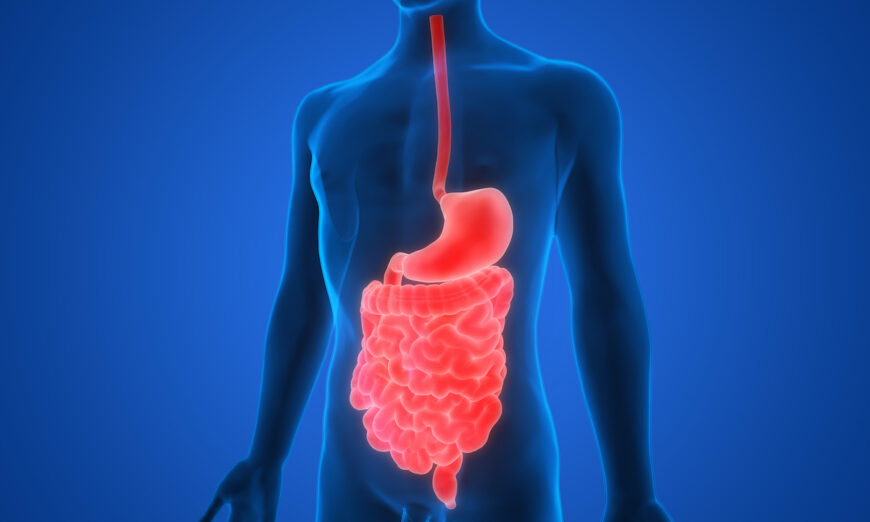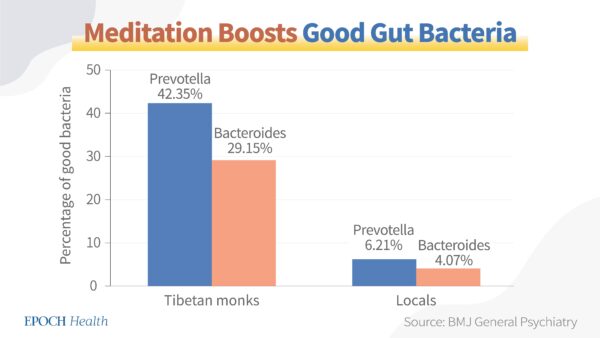Abstract
Background
Efanesoctocog alfa provides high sustained factor VIII activity by overcoming the von Willebrand factor–imposed half-life ceiling. The efficacy, safety, and pharmacokinetics of efanesoctocog alfa for prophylaxis and treatment of bleeding episodes in previously treated patients with severe hemophilia A are unclear.
Methods

We conducted a phase 3 study involving patients 12 years of age or older with severe hemophilia A. In group A, patients received once-weekly prophylaxis with efanesoctocog alfa (50 IU per kilogram of body weight) for 52 weeks. In group B, patients received on-demand treatment with efanesoctocog alfa for 26 weeks, followed by once-weekly prophylaxis with efanesoctocog alfa for 26 weeks. The primary end point was the mean annualized bleeding rate in group A; the key secondary end point was an intrapatient comparison of the annualized bleeding rate during prophylaxis in group A with the rate during prestudy factor VIII prophylaxis. Additional end points included treatment of bleeding episodes, safety, pharmacokinetics, and changes in physical health, pain, and joint health.
Results
In group A (133 patients), the median annualized bleeding rate was 0 (interquartile range, 0 to 1.04), and the estimated mean annualized bleeding rate was 0.71 (95% confidence interval [CI], 0.52 to 0.97). The mean annualized bleeding rate decreased from 2.96 (95% CI, 2.00 to 4.37) to 0.69 (95% CI, 0.43 to 1.11), a finding that showed superiority over prestudy factor VIII prophylaxis (P<0.001). A total of 26 patients were enrolled in group B. In the overall population, nearly all bleeding episodes (97%) resolved with one injection of efanesoctocog alfa. Weekly prophylaxis with efanesoctocog alfa provided mean factor VIII activity of more than 40 IU per deciliter for the majority of the week and of 15 IU per deciliter at day 7. Prophylaxis with efanesoctocog alfa for 52 weeks (group A) improved physical health (P<0.001), pain intensity (P=0.03), and joint health (P=0.01). In the overall study population, efanesoctocog alfa had an acceptable side-effect profile, and the development of inhibitors to factor VIII was not detected.
Conclusions
In patients with severe hemophilia A, once-weekly efanesoctocog alfa provided superior bleeding prevention to prestudy prophylaxis, normal to near-normal factor VIII activity, and improvements in physical health, pain, and joint health. (Funded by Sanofi and Sobi; XTEND-1 ClinicalTrials.gov number, NCT04161495. opens in new tab.)
QUICK TAKEEfanesoctocog Alfa for Severe Hemophilia A 02:20
Regular prophylaxis to prevent spontaneous bleeding and joint damage is the standard treatment for severe hemophilia A.1 A trough factor VIII level of 1 IU per deciliter (or 1%) was considered to be an adequate goal for prophylaxis for many years, but recently revised World Federation of Hemophilia guidelines acknowledge that many clinicians now prefer to target trough factor VIII activity of 3 to 5 IU per deciliter or higher for their patients.1 However, both life-threatening bleeding and bleeding into joints still occur, with the latter contributing to substantial morbidity as a result of chronic pain and hemophilic arthropathy.2-6 Normalization of factor VIII levels may increase protection from both spontaneous and traumatic (including life-threatening) bleeding and preserve joint health, particularly for patients at higher risk, such as those with an active lifestyle or with recurrent hemarthrosis.7,8 The interaction between factor VIII and endogenous von Willebrand factor (VWF) imposes a ceiling of 8 to 19 hours on the half-life of current factor VIII replacement products.9-17 Therefore, maintaining factor VIII levels in the normal range (50 to 150 IU per deciliter) or levels that are close to normal (>40 to <50 IU per deciliter; defined herein as “near-normal”) with currently available factor VIII therapies requires frequent administration, which confers a substantial treatment burden on people with hemophilia and their caregivers.1
Efanesoctocog alfa (formerly BIVV001) is a new class of factor VIII replacement therapy designed to decouple recombinant factor VIII from endogenous VWF and overcome the VWF-imposed half-life ceiling.18,19 Efanesoctocog alfa is composed of a single recombinant factor VIII protein and three additional components that contribute to its increased half-life: an Fc domain that facilitates recycling through the neonatal Fc receptor pathway, covalent linkage to a VWF D′D3 factor VIII binding domain to decouple recombinant factor VIII from endogenous VWF, and two XTEN polypeptides to shield efanesoctocog alfa from proteolytic degradation and clearance.18,19 A schematic diagram of the molecule is provided in the Supplementary Appendix, available with the full text of this article at NEJM.org. The pharmacokinetics and safety of single- and repeat-dose efanesoctocog alfa have been evaluated in phase 1 and 1–2a studies.12,13,20 In the sequential single-dose study, single-dose efanesoctocog alfa (50 IU per kilogram of body weight) had a mean terminal half-life of 43.3 hours, which was approximately three to four times as long as those of rurioctocog alfa (15.4 hours) and octocog alfa (11.0 hours).13 Here, we report the results of XTEND-1, a pivotal phase 3 study to determine the efficacy, safety, and pharmacokinetics of efanesoctocog alfa for routine prophylaxis, treatment of bleeding episodes, and perioperative management in previously treated adults and adolescents with severe hemophilia A.
Methods
Population and Study Design
XTEND-1 was an open-label, multicenter study involving previously treated patients 12 years of age or older with endogenous factor VIII activity of less than 1 IU per deciliter (<1%) or a documented genotype known to produce severe hemophilia A. Patients were required to have had at least 150 previous exposure days to recombinant or plasma-derived factor VIII concentrates or cryoprecipitate. Patients were assigned to receive efanesoctocog alfa as prophylaxis (group A) or as on-demand treatment, followed by prophylaxis (group B). To be included in group A, patients were required to have been receiving a prophylactic regimen; to be included in group B, patients were required to have been receiving on-demand treatment with factor VIII replacement and to have had at least 6 bleeding episodes in the previous 6 months or at least 12 bleeding episodes in the previous 12 months.
Patients were excluded if they had a positive test for factor VIII inhibitor (≥0.6 Bethesda units [BU] per milliliter) at screening or a history of a positive inhibitor test, clinical signs or symptoms of a decreased response to factor VIII, other known coagulation disorders, a history of hypersensitivity or anaphylaxis to factor VIII therapies, or major surgery within 8 weeks before screening. Patients with human immunodeficiency virus (HIV) infection were excluded if they had a CD4 lymphocyte count of 200 cells or less per microliter or a viral load of 400 copies or more per milliliter. A full list of enrollment criteria is provided in Table S1 in the Supplementary Appendix.
Study Treatment
Patients in group A were assigned to receive once-weekly prophylactic doses of 50 IU per kilogram of intravenous efanesoctocog alfa for 52 weeks. Patients in group B were assigned to receive on-demand treatment with 50 IU per kilogram of intravenous efanesoctocog alfa for 26 weeks, followed by once-weekly prophylactic doses of 50 IU per kilogram of intravenous efanesoctocog alfa for 26 weeks (Fig. S1).
Bleeding episodes were treated with a single dose of 50 IU per kilogram of efanesoctocog alfa. If the bleeding episode did not resolve, additional doses of 30 or 50 IU per kilogram could be administered every 2 or 3 days, as needed. Patients who underwent major surgery were included in the surgery subgroup. These patients received a preoperative loading dose of 50 IU per kilogram of efanesoctocog alfa, followed by additional doses of 30 or 50 IU per kilogram every 2 or 3 days, as needed.
End Points
The primary end point was the mean annualized bleeding rate in group A. The key secondary efficacy end point was an intrapatient comparison of the annualized bleeding rate in group A and the rate during prestudy prophylaxis in a subgroup of patients who participated in a prospective, observational prestudy (242HA201/OBS16221) and who had at least 6 months of available efficacy data from both the prestudy and XTEND-1 (see the Methods section in the Supplementary Appendix). In the observational prestudy, data were collected on bleeding episodes and treatment with standard-care factor VIII prophylaxis. Additional secondary end points included the annualized bleeding rate according to bleeding type (all bleeding and spontaneous bleeding) and location (joint), an intrapatient comparison of the annualized bleeding rate during the prophylaxis period with the rate during the on-demand treatment period in group B, bleeding-treatment outcomes, perioperative management of major surgery, pharmacokinetics, quality of life (including physical health and pain intensity), joint health, and safety.
Quality of life was assessed with the use of the Hemophilia Quality of Life Questionnaire for Adults (Haem-A-QoL; administered to patients ≥17 years of age) and the Patient-Reported Outcomes Measurement Information System (PROMIS) Pain Intensity–Short Form 3a, which measures the worst pain intensity within the past 7 days. Response to treatment was evaluated by means of the Physician’s Global Assessment. Response to treatment of bleeding episodes was measured with the use of the 4-point International Society on Thrombosis and Haemostasis scale, and the hemostatic response to surgery was assessed with the use of the 4-point surgical procedures scale. Joint health was assessed with the use of the Hemophilia Joint Health Score (HJHS) (see the Methods section in the Supplementary Appendix). All bleeding rates refer to treated bleeding events unless otherwise stated. Target-joint resolution at week 52 was assessed. A target joint was defined as a major joint with at least three spontaneous bleeding episodes in a consecutive 6-month period before study entry.1 Target-joint resolution was defined as no more than two episodes of bleeding into that joint during 12 months of continuous exposure to efanesoctocog alfa. Exit interviews were conducted in a subgroup of patients to provide a qualitative assessment of the clinical meaningfulness of the patient-reported end points for physical health and pain.
Other Assessments
A subgroup of patients in group A underwent sequential blood sampling for pharmacokinetic assessment (up to 336 hours) at week 1 and a reassessment at week 26. All other patients underwent abbreviated sampling (up to 168 hours) for factor VIII activity during week 1. Sampling for peak and trough factor VIII activity occurred at weeks 4 and 13 (group A only) and weeks 26, 39, and 52 (both groups). Factor VIII activity was measured by means of the activated partial-thromboplastin time (aPTT)–based one-stage clotting assay with the use of the Actin FSL reagent and the World Health Organization 6th International Standard for factor VIII.
The development of factor VIII inhibitors was assessed with the use of a Nijmegen-modified Bethesda assay, and the development of antidrug antibodies was assessed with the use of an efanesoctocog alfa–specific antidrug-antibody assay.1,21 Samples were tested at screening, baseline, and weeks 4, 13, 26, 39, and 52. The development of inhibitors to factor VIII was defined as a result of 0.6 BU or more per milliliter that was confirmed by a second positive result from a separate sample drawn 2 to 4 weeks later. Both tests were performed by the central laboratory.
Study Oversight
The study was performed in accordance with the principles of the Declaration of Helsinki and local regulations. The study was funded by Sanofi and Sobi. All the authors had access to the primary clinical-trial data and vouch for the completeness and accuracy of the data and for the adherence of the study to the protocol (available at NEJM.org). The manuscript was developed with medical writing support funded by Sanofi and Sobi.
Statistical Analysis
The primary end point was estimated in the full analysis set (all patients in group A who received at least one dose of efanesoctocog alfa) with the use of a negative-binomial regression model. Annualized bleeding rates were calculated on the basis of the number of bleeding episodes during the efficacy period (see the Supplementary Appendix for a definition of the efficacy period). If the upper limit of the 97.5% confidence interval for the annualized bleeding rate in group A was 6 or less, the intervention was considered to be effective (see the Methods section in the Supplementary Appendix for rationale). The intrapatient comparison of the annualized bleeding rate during prophylaxis in group A and the rate during prestudy prophylaxis was assessed with the use of a negative-binomial regression model. Noninferiority and superiority of efanesoctocog alfa prophylaxis to prestudy prophylaxis were evaluated sequentially (see the Methods section in the Supplementary Appendix for criteria used to assess noninferiority and superiority). The adjusted mean change from baseline to week 52 in physical health (Haem-A-QoL physical-health score), pain (PROMIS pain-intensity score), and joint health (HJHS) were estimated by means of mixed-effects models with repeated measures, as part of a prespecified hierarchical testing framework.
Baseline factor VIII levels were assessed after a minimum washout period of 4 or 5 days, depending on previous therapy, and before administration of the first dose of efanesoctocog alfa. Pharmacokinetic variables were computed with the use of baseline-corrected values for factor VIII activity. Safety outcomes were analyzed with the use of descriptive statistics. The incidence of the development of inhibitors to factor VIII was determined with the use of an exact 95% confidence interval on the basis of the binomial distribution.
Results
Patient Characteristics
Figure 1.  Enrollment, Randomization, and Follow-up.Table 1.
Enrollment, Randomization, and Follow-up.Table 1.  Demographic and Clinical Characteristics of the Patients at Baseline.
Demographic and Clinical Characteristics of the Patients at Baseline.
A total of 159 patients from 48 centers in 19 countries were enrolled in the study, with 133 in group A and 26 in group B. Of the 159 patients, 149 (94%) completed the study and 10 (6%) discontinued the study prematurely (Figure 1). The most common reasons for discontinuation was withdrawal of consent and the use of prohibited concomitant medication (3 patients each). The demographic and clinical characteristics of the patients at baseline were representative of previously treated patients with severe hemophilia A (Table 1 and Table S4). One female patient with severe hemophilia A was enrolled in group A. Almost half the patients had a genotype associated with an increased risk of the development of inhibitors to factor VIII (36% had intron 22 inversions, and 9% had nonsense mutations) (Table S2).
The mean (±SD) number of exposure days to efanesoctocog alfa was 48.4±10.5 in the overall population, 50.9±9.1 in group A, 11.9±4.3 during the on-demand treatment period in group B, and 23.8±6.1 days during the prophylaxis period in group B. Combined dose and administration-interval adherence was 98% in group A and 88% in group B.
Efficacy
Table 2.  Annualized Bleeding Rates.
Annualized Bleeding Rates.
In group A, the median annualized bleeding rate was 0.00 (interquartile range, 0.00 to 1.04), and the estimated mean annualized bleeding rate was 0.71 (95% confidence interval [CI], 0.52 to 0.97) (Table 2). The intervention was considered to be effective (i.e., the upper limit of the one-sided 97.5% CI was ≤6). Furthermore, all the patients were assessed by the physician as having an excellent or effective response to efanesoctocog alfa. In group A, 65% of the patients with evaluable data during the efficacy period had zero bleeding episodes and 93% had zero to two bleeding episodes. No episodes of spontaneous bleeding were reported in 107 of 133 patients (80%) in group A and in 22 of 26 patients (85%) during the prophylaxis period in group B (Table 2).
Switching from prestudy standard-care factor VIII prophylaxis to efanesoctocog alfa prophylaxis in group A decreased the mean annualized bleeding rate from 2.96 to 0.69, a reduction of 77% (key secondary end point), which showed superiority over prestudy prophylaxis (annualized bleeding rate ratio, 0.23; 95% CI, 0.13 to 0.42; P<0.001) (Table 2). The annualized bleeding rate also decreased when patients switched from on-demand efanesoctocog alfa to prophylaxis in group B (mean [±SD] annualized bleeding rate, 21.42±7.41 vs. 0.69±1.35).
A total of 362 bleeding events occurred during the study, with the majority (268 of 362, 74%) occurring in group B during the on-demand treatment period. A single injection of efanesoctocog alfa (50 IU per kilogram) was sufficient to resolve 97% of bleeding events in the study. A total of 317 of 334 evaluated injections (95%) were assessed as resulting in excellent or good responses.
A total of 13 patients underwent 14 major surgeries (defined in the Methods section in the Supplementary Appendix) during the study. Two major surgeries took place after the last dose of efanesoctocog alfa and were not assessed. For the 12 surgeries that could be evaluated, all hemostatic responses to efanesoctocog alfa were deemed by the investigator or surgeon to be excellent.
Pharmacokinetics
Figure 2.  Factor VIII Activity over Time and Pharmacokinetic Variables.
Factor VIII Activity over Time and Pharmacokinetic Variables.
Once-weekly prophylaxis with efanesoctocog alfa (50 IU per kilogram) provided mean factor VIII activity of more than 40 IU per deciliter for approximately 4 days after administration and of 15 IU per deciliter at day 7 (Figure 2 and Fig S2). The geometric mean half-life was 47.0 hours (95% CI, 42.3 to 52.2), the steady state clearance 0.439 ml per hour per kilogram (95% CI, 0.390 to 0.493), the maximum factor VIII activity 151 IU per deciliter (95% CI, 137 to 167), and the area under the activity–time curve from hour 0 to infinity 11,500 h×IU per deciliter (95% CI, 10,200 to 13,000). There was minimal accumulation of once-weekly efanesoctocog alfa.
Physical Health, Pain, and Joint Health
Table 3.  Patient-Reported Physical Health and Pain Intensity (Group A).
Patient-Reported Physical Health and Pain Intensity (Group A).
For patients receiving prestudy standard-care factor FVIII prophylaxis who were enrolled in group A, weekly prophylaxis with efanesoctocog alfa resulted in significant improvements from baseline in the Haem-A-QoL physical-health score (P<0.001) and the PROMIS pain-intensity score (P=0.03) at week 52 (Table 3). The percentage of these patients in group A who reported no use of medication for hemophilia-related pain in the previous 14 days was higher at week 52 than at baseline (80% vs. 73%) (Fig. S3). In addition, the mean HJHS (scores range from 0 to 124, with higher scores indicating worse joint health) decreased from baseline to week 52 (mean change, −1.54; 95% CI, −2.70 to −0.37; P=0.01) in group A. All 45 target joints resolved among the 14 patients who had target joints identified at baseline and at least 12 months of on-study prophylaxis. Exit interviews support the improvements observed in physical health. All 29 patients who had exit interviews preferred weekly efanesoctocog alfa prophylaxis to their previous hemophilia treatment.
Immunogenicity and Safety
The development of inhibitors to factor VIII was not detected (overall incidence, 0%; 95% CI, 0.0 to 2.3), and no reports of serious allergic reactions, anaphylaxis, or vascular thrombotic events occurred. Of the 159 patients who received at least one dose of efanesoctocog alfa, 123 (77%) had at least one adverse event that developed or worsened during the treatment period, including 15 patients (9%) with at least one serious adverse event (Table S3). The most common adverse events overall (reported in >5% of patients) were headache (in 32 patients [20%]), arthralgia (in 26 [16%]), fall (in 10 [6%]), and back pain (in 9 [6%]). One patient in group B had metastatic pancreatic carcinoma that was fatal and was assessed by the investigator as not being related to efanesoctocog alfa. Two patients had adverse events leading to discontinuation of efanesoctocog alfa: decreased CD4 lymphocyte count in a patient with a history of HIV infection and combined tibia–fibula fracture in a patient who received treatment with another factor VIII product, which was prohibited during the study.
A total of 11 patients (7%) were positive for preexisting antidrug antibodies before receiving efanesoctocog alfa, with no discernible effect on any pharmacokinetic variable that was assessed in comparison with the antibody-negative population on day 1 of the study. During the study, transient antidrug antibodies developed in 4 patients (3%). The factor VIII activity–time profiles, calculated pharmacokinetic variables, and bleeding rates were similar in the patients in whom antidrug antibodies developed and those who were antibody-negative throughout the study.
Discussion
Once-weekly prophylaxis with efanesoctocog alfa (50 IU per kilogram) provided effective prevention of bleeding and superior bleeding protection as compared with prestudy standard-care factor VIII prophylaxis. Significant improvements in physical health, pain, and joint health were shown. Furthermore, 80% (group A) and 85% (group B) of patients had zero spontaneous bleeding episodes during the prophylaxis periods. When bleeding events did occur, a single injection of 50 IU per kilogram of efanesoctocog alfa provided effective resolution for 97% of such events. The majority of adverse events were mild in degree and did not result in discontinuation of efanesoctocog alfa. The development of inhibitors to factor VIII was not detected, and no reports of serious allergic reactions, anaphylaxis, or vascular thrombotic events were noted.
Up to 46% of people with hemophilia report living with chronic pain,22 which can negatively affect physical and psychological health.23 Prophylaxis with efanesoctocog alfa significantly improved physical health (Haem-A-QoL physical-health score) and pain (PROMIS pain-intensity score) in patients who were receiving prestudy standard-care factor VIII prophylaxis. In addition, the percentage of patients reporting no use of pain medication during the previous 14 days increased during the study. Collectively, these results suggest the prophylaxis with efanesoctocog alfa has the potential to provide meaningful improvements in physical health and pain for persons with severe hemophilia A. In addition, prophylaxis with efanesoctocog alfa positively affected joint health, as shown by the complete resolution of target joints, absence of bleeding into joints in 72% (group A) and 81% (group B) of the patients during prophylaxis, and a modest but significant improvement in the HJHS in patients receiving previous factor VIII prophylaxis. These end points are planned to be assessed over longer periods in the phase 3 extension study (XTEND-ed; ClinicalTrials.gov number, NCT04644575. opens in new tab).
Efanesoctocog alfa (50 IU per kilogram) had a long geometric mean half-life of 47.0 hours (95% CI, 42.3 to 52.2) and maintained mean factor VIII levels in the normal to near-normal range (>40 IU per deciliter) for 4 days and of 15 IU per deciliter at day 7, as determined by the aPTT-based one-stage clotting assay. In addition to maintaining high sustained factor VIII levels, uncoupling recombinant factor VIII from VWF may also reduce interpatient pharmacokinetic variability of efanesoctocog alfa and increase the predictability of the factor VIII profile over time, because circulating VWF levels vary widely among patients and within the same person.24 The reduced interpatient pharmacokinetic variability is supported by a recent phase 1 sequential pharmacokinetic study,13 which showed a coefficient of variation for clearance of 45% for octocog alfa, 33% for rurioctocog alfa pegol, and 19% for efanesoctocog alfa.13 The low variability in efanesoctocog alfa clearance allows the use of a standard weekly dose of 50 IU per kilogram for prophylaxis and reduces the need for monitoring of factor VIII activity levels for individualized pharmacokinetic-based prophylaxis. Decoupling recombinant factor VIII from VWF does not affect clot formation, as shown by the efficacy results in the current study and by previous in vitro and in vivo results.25
Collectively, these results show that by maintaining high sustained factor VIII activity, once-weekly efanesoctocog alfa provided substantial improvements in clinical outcomes and quality of life for patients with severe hemophilia A. Additional phase 3 studies involving patients with severe hemophilia A are ongoing to assess pediatric outcomes (XTEND-Kids, NCT04759131. opens in new tab) and the long-term safety and efficacy of prophylaxis with efanesoctocog alfa.
Source: NEJM





 Enrollment, Randomization, and Follow-up.Table 1.
Enrollment, Randomization, and Follow-up.Table 1.  Demographic and Clinical Characteristics of the Patients at Baseline.
Demographic and Clinical Characteristics of the Patients at Baseline. Annualized Bleeding Rates.
Annualized Bleeding Rates. Factor VIII Activity over Time and Pharmacokinetic Variables.
Factor VIII Activity over Time and Pharmacokinetic Variables. Patient-Reported Physical Health and Pain Intensity (Group A).
Patient-Reported Physical Health and Pain Intensity (Group A).


